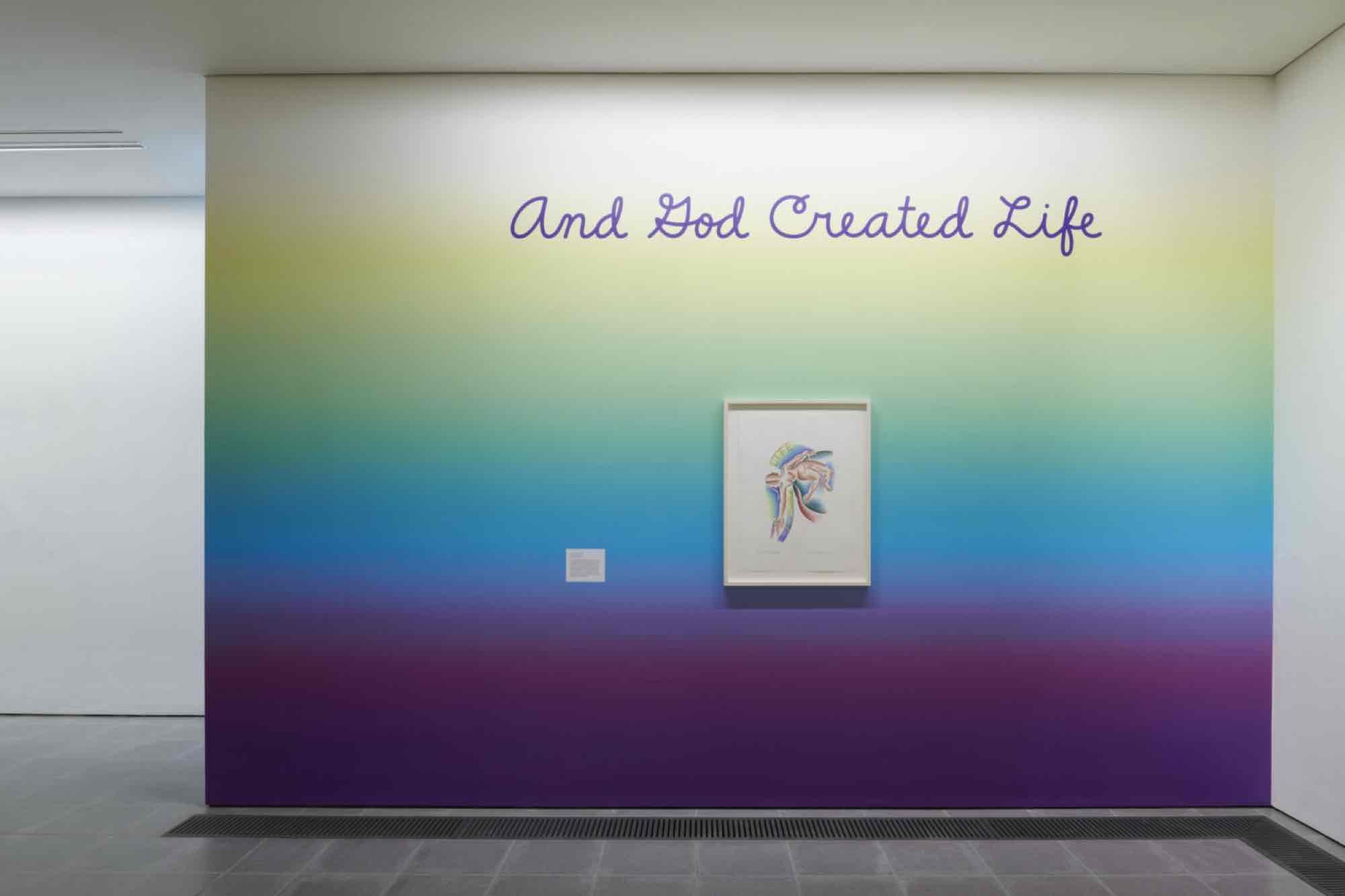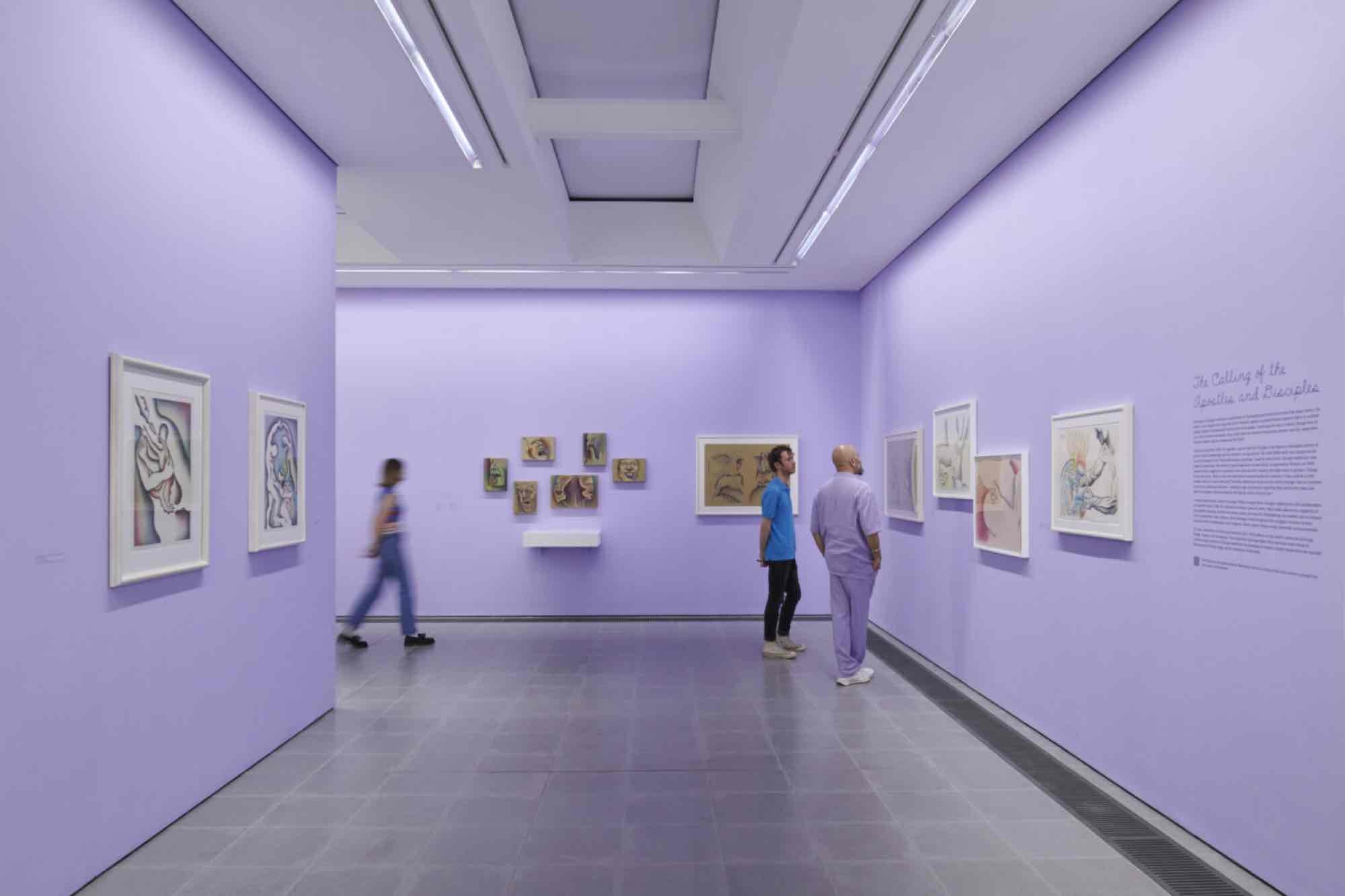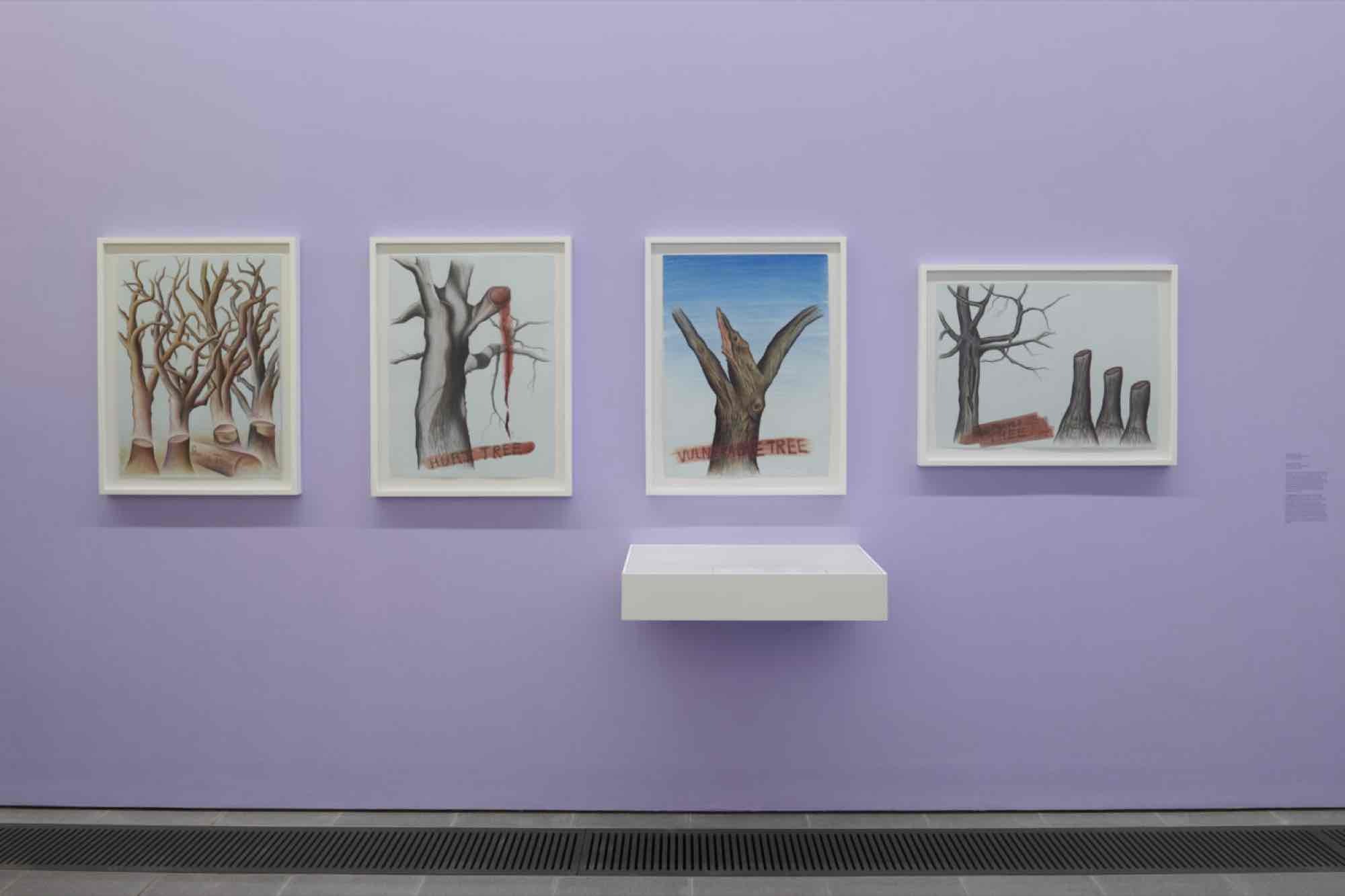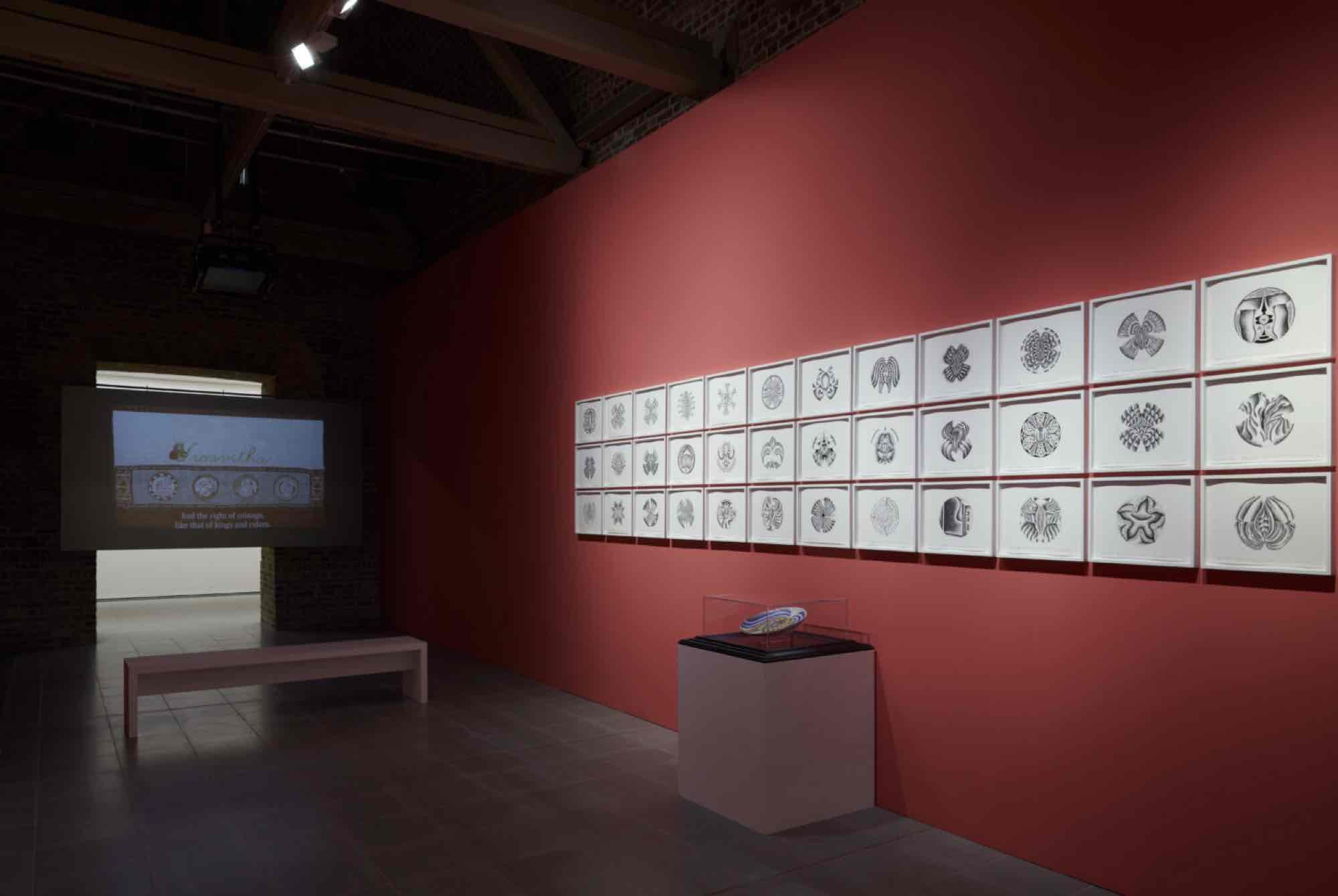Judy Chicago
Revelations
23 May - 01 Sep 2024

Judy Chicago: Revelations, 2024. Installation view, Serpentine North. © Judy Chicago/Artists Rights Society (ARS), New York. Photo: Jo Underhill. Courtesy Judy Chicago and Serpentine.

Judy Chicago: Revelations, 2024. Installation view, Serpentine North. © Judy Chicago/Artists Rights Society (ARS), New York. Photo: Jo Underhill. Courtesy Judy Chicago and Serpentine.

Judy Chicago: Revelations, 2024. Installation view, Serpentine North. © Judy Chicago/Artists Rights Society (ARS), New York. Photo: Jo Underhill. Courtesy Judy Chicago and Serpentine.

Judy Chicago: Revelations, 2024. Installation view, Serpentine North. © Judy Chicago/Artists Rights Society (ARS), New York. Photo: Jo Underhill. Courtesy Judy Chicago and Serpentine.

Judy Chicago: Revelations, 2024. Installation view, Serpentine North. © Judy Chicago/Artists Rights Society (ARS), New York. Photo: Jo Underhill. Courtesy Judy Chicago and Serpentine.

Judy Chicago: Revelations, 2024. Installation view, Serpentine North. © Judy Chicago/Artists Rights Society (ARS), New York. Photo: Jo Underhill. Courtesy Judy Chicago and Serpentine.

Judy Chicago: Revelations, 2024. Installation view, Serpentine North. © Judy Chicago/Artists Rights Society (ARS), New York. Photo: Jo Underhill. Courtesy Judy Chicago and Serpentine.
Judy Chicago (b. 1939, Chicago, USA) gained prominence in the late 1960s for making work from a woman-centered perspective, which challenged the male-dominated landscape of the art world. An artistic polymath, Chicago’s work is characterised by a commitment to craft and experimentation, evident in her subject matter, methodology and choice of materials.
Throughout her six-decade career, Chicago has contested the absence and erasure of women in the Western cultural canon, developing a distinctive visual language that gives visibility to their experiences. Her individual and collaborative projects address themes of birth; masculinity; Jewish identity; notions of power; extinction; and a longstanding concern for climate justice.
This exhibition, the artist’s largest solo presentation in a London institution, takes its name from an unpublished illuminated manuscript Chicago penned in the early 1970s whilst creating The Dinner Party (1974–79) – a monumental installation that symbolises the achievements of 1038 women, now permanently housed at the Brooklyn Museum, New York. To coincide with the exhibition, the manuscript will be published for the first time by Serpentine and Thames & Hudson. It offers a radical retelling of history and a vision of a just and equitable world.
Organised thematically around the manuscript’s chapters, the exhibition focuses on drawing – a medium Chicago has explored for over six decades. Tracing the arc of the artist’s career, the exhibition brings together archival and never-before-seen artworks, early abstract and minimalist works of the 1960s and 70s; an immersive video installation of footage from her site-specific performances that employed coloured smokes and fireworks; preparatory studies related to major projects such as The Dinner Party (1974–79), Birth Project (1980–85); and PowerPlay (1982–87), and notebooks and sketchbooks revealing her working process and years-long research. These works are amplified by multidisciplinary and participatory elements, including an AR app, a video recording booth and audio-visual components allowing visitors to uncover the breadth of Chicago’s practice.
Throughout her six-decade career, Chicago has contested the absence and erasure of women in the Western cultural canon, developing a distinctive visual language that gives visibility to their experiences. Her individual and collaborative projects address themes of birth; masculinity; Jewish identity; notions of power; extinction; and a longstanding concern for climate justice.
This exhibition, the artist’s largest solo presentation in a London institution, takes its name from an unpublished illuminated manuscript Chicago penned in the early 1970s whilst creating The Dinner Party (1974–79) – a monumental installation that symbolises the achievements of 1038 women, now permanently housed at the Brooklyn Museum, New York. To coincide with the exhibition, the manuscript will be published for the first time by Serpentine and Thames & Hudson. It offers a radical retelling of history and a vision of a just and equitable world.
Organised thematically around the manuscript’s chapters, the exhibition focuses on drawing – a medium Chicago has explored for over six decades. Tracing the arc of the artist’s career, the exhibition brings together archival and never-before-seen artworks, early abstract and minimalist works of the 1960s and 70s; an immersive video installation of footage from her site-specific performances that employed coloured smokes and fireworks; preparatory studies related to major projects such as The Dinner Party (1974–79), Birth Project (1980–85); and PowerPlay (1982–87), and notebooks and sketchbooks revealing her working process and years-long research. These works are amplified by multidisciplinary and participatory elements, including an AR app, a video recording booth and audio-visual components allowing visitors to uncover the breadth of Chicago’s practice.
